The Tree of Life
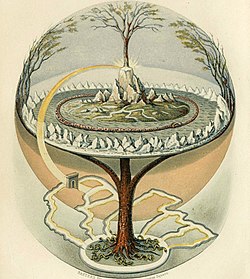

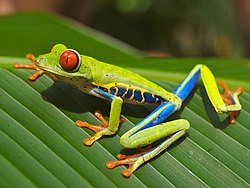
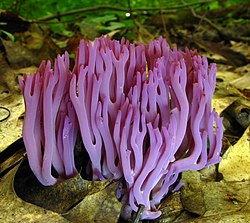


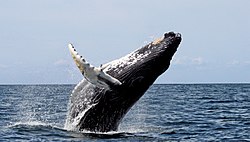
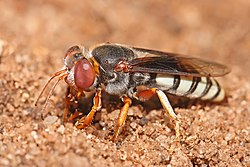

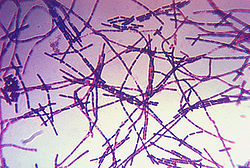
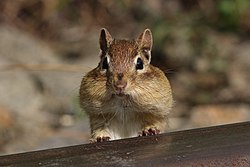
This week, we sat down with WikiProject Tree of Life, one of Wikipedia's oldest projects, predating the creation of the WikiProject concept. While WikiProject Tree of Life's current page was formulated in June 2002, the effort to organize Wikipedia's articles on all living organisms dates back to at least late 2001, when Manning Bartlett mentioned the existing Tree of Life project in his proposal for the establishment of WikiProjects. Today, the project's goals remain unchanged, despite the proliferation of descendent projects handling various groups of living things. Among the project's to-do list are creating missing articles for animals and plants, responding to cleanup tags, identifying unknown images of plants on Commons, and monitoring the project's watchlist. We interviewed members Shyamal, Bob the Wikipedian, JoJan, EncycloPetey, and Kevmin.
What motivated you to join WikiProject Tree of Life? Do you have any degrees or experience in biology? Are you a member of any of the kingdom- or species-specific projects under the scope of WikiProject Tree of Life?
- Shyamal: I have always been interested in the living world around and have a masters degree which included biology subjects. Having trained briefly in entomology before leaving it due mainly to reasons of economics, it has been a particular pleasure to be able to continue some occasional secondary research on entomological aspects via Wikipedia. My knowledge and experience with birds may perhaps be richer than in other groups.
- Bob the Wikipedian: I have half of a minor in biology, but I've been a long-term enthusiast for as long as I can remember! My first book was the color-plate global biome book Minelli and Borella World Atlas of Animals (my parents bought it so they could answer my queries about what gorillas eat and what noise hippos make). Zoobooks made for a great supplementary addition each month once I got old enough to read, and Encarta Encyclopedia fed my thirst for knowledge through grade school. Ever since college started, though, I've felt the need to seek further information and share it as well, and Wikipedia's Tree of Life has let me do just that. In my spare time, I conduct various informal research projects; last summer I collected local wild invertebrates all year and fed and tried to breed (unsuccessfully) hundreds of brown recluses. This year, I've been keeping an eastern fence lizard and several five-liners, which I recently put outside to see if I can have them brumate in captivity. On Wikipedia, I mostly work with code-related tasks, such as the {{automatic taxobox}} template family and the {{geological range}} template family, but also create stubs for newly discovered paleozoids.
- JoJan: I started WikiProject Gastropods in 2004 at the request of an administrator, who was an early member of Tree of Life. I had no degree in biology or particular experience. When I realized the enormous scope of this project (somewhere between 80,000 and 100,000 species), it got through my head that this was an almost impossible undertaking and would take a long time. I had to learn everything from scratch: the biology, the taxonomy (what a mess it was in those days when searching the Internet!), the scientific jargon etc.... This shows that one doesn't need to be an experienced biologist to participate in one of the projects under the umbrella of Tree of Life. All one needs is dedication and a willingness to learn. Even uploading of photos of species is much appreciated.
- EncycloPetey: I have a bachelor's degree in biology and did extensive graduate work. Currently, I participate in WP:PLANTS and WP:ALGAE, and also work in these areas on Wikispecies. My participation began when I discovered there were many major groups of plants, algae, and fossil plants with little or no coverage on Wikipedia. I wanted to make things better.
- Kevmin: I've been working with various subprojects of WP:ToL since I started contributing to Wikipedia. As someone slowly working towards a degree in paleontology almost all of my contributions are on extinct animals and plants.
As one of the oldest collaborations on Wikipedia, WikiProject Tree of Life was created with an unusually creative name. Please describe for our readers the project's long history and why the project is named after the tree of life. Have there been any attempts to change the name to something related to the project's scope, like "WikiProject Taxonomy"?
- Shyamal: I am not sure of the origin, but it is definitely a nice name that reflects the broadness of its scope (which goes beyond taxonomy). The image of evolution has evolved from that of a "ladder" to a "tree" and someday will perhaps be seen as a (tangled) "web of life".
- EncycloPetey: I rather suspect it was influenced by the name of the Tree of Life web project [1], which was the first serious effort to create an interactive phylogenetic diagram for all of life, with editing and maintenance done by experts in their respective fields.
- Bob the Wikipedian: You've inspired me to do a bit of research. It would seem the original proposal didn't have the words "Tree of Life" anywhere in it; the name actually was assigned upon the creation of the WikiProject on 22 June 2002. To quote the original scope presented when the project commenced, "This WikiProject aims to present the taxonomy of all living species (and maybe some extinct ones as well) in a tree structure. This is a particularly ambitious WikiProject, as there are millions of them." The project was listed as a daughter project of WP:WikiProject Biology (not created until three years later!) and a granddaughter of WP:WikiProject Science, and was to be modeled after the ITIS and NCBI systems (the naming conflict with the Tree of Life Web Project appears entirely coincidental).
How does the project's scope differ from other large umbrella projects? What relationship does WikiProject Tree of Life have with the numerous sub-projects?
- Shyamal: most discussions relating to the taxobox and general aspects like article structure and naming tend to be taken up in the umbrella project.
- Bob the Wikipedian: The Tree of Life serves as a sort of organization within which are formed the various projects such as WikiProject Animals, WikiProject Plants, etc., which all have their sub-organization-level projects as well. So when someone has a question or concern that affects part of the Tree of Life, they post it on the talk page of the most common denominator-- that is, if someone has a question about how to make an article about a dolphin have the correct information that would appear on any other mammal page, the topic gets posted at Wikipedia talk:WikiProject Mammals. If someone has an idea for how to improve the taxobox, this affects all branches of life, so a notice goes at Wikipedia talk:WikiProject Tree of Life.
- EncycloPetey: Aspects of style as well as questions of principles and policies are discussed here, rather than particular cases of content. Most content-specific questions are handled by sub-projects.
- Kevmin: As others have noted the project acts as a focus for questions that are more general in nature and affect multiple subprojects. These discussions include taxobox functionality and improvement, general article structuring and is a home project for the organisms and articles that do not have a subproject.
Do you feel there are particular kingdoms that are better represented on Wikipedia? Do some living things elicit more enthusiasm and activity from editors?
- Shyamal: for sure, we have a bias towards the visible and more appealing taxa. We also have geographic differences and have a particularly limited coverage for Africa, parts of Southeast Asia and South America that are particularly rich.
- Bob the Wikipedian: Honestly, I don't dabble much in separate kingdoms (I stick with Animalia myself), but I can say with certainty there are phyla that don't get enough attention; for instance, Porifera. Speaking for paleozooids, however, there is a dramatic bias toward dinosaurs, even though this is one of the smallest known groups of paleozooids! To properly reflect the species distribution, Wikipedia would need perhaps at least a thousand articles on prehistoric shellfish per each individual article on a dinosaur!
- EncycloPetey: Most definitely. We have pretty good coverage of vertebrates and insects, and some seed plants. We have little to no coverage of echinoderms (seastars and urchins), bryophytes (mosses and liverworts), or algae. Articles about micro-organisms are few and poorly covered, with some notable exceptions.
- Kevmin: Mammals and vertebrates in general always attract more attention then other groups. But conversely the coverage of extinct mammals and extinct groups outside of Dinosaurs is very spotty at best.
WikiProject Tree of Life has provided resources for editors to create articles for the numerous living things included in various lists of missing articles. How close is Wikipedia to providing a stub about every known creature? What will be the next step once that goal is achieved?
- Shyamal: that goal will likely not be reached here or on The Encylopedia of Life (EoL) project. The major differences between Wikipedia and other projects is (a) a holistic view - including links to biographies (b) cultural associations and the possibility of (c) reuse due to a better licensing scheme (See doi:10.3897/zookeys.150.2189 on this issue). Things like semantic search (for example a friend was recently looking for literature on fishes preying on birds and almost all keyword based searches produce false positives - a semantic search would differentiate the object, subject and verb) will become more interesting in the future, and Wikipedia will surely form the best corpus available for that.
- Bob the Wikipedian: Ha! We certainly try, but to be quite honest, it will be MANY years down the road before we can even come close to cataloguing all known species. Even given that time, there's no official list of accepted species-- many species are rather ambiguous in that scientists don't agree on whether they are unique species, so the idea of Wikipedia eventually being the ultimate compendium of all known species is a bit misguided.
- JoJan: The WikiProject Gastropods has a working group of about 25 collaborators, some of which are very active. We have a bot active at this moment, working at a slow pace (as we are required to check it each time) creating stubs (or even articles qualified at the level of “start”) of several 10,000 species. This is already saving us a lot of time, enabling us to add the necessary data without going to the trouble of creating first an article from scratch.
- EncycloPetey: We don't even have stubs for all known species, and we aren't likely to have that in the near future. Classification is still a dynamic field, with continual new discoveries made of species and new findings published regarding the relationships of known ones. Sometimes a fossil that was originally thought to be an animal turns out to be an alga, and then the whole classification will change accordingly. If we did have all the stubs started and up-to-date on their classification, we'd still want to add coverage of the organisms' distribution, habitat, appearance, interactions with other organisms, and so forth. There's also a continual search for new and better images to accompany articles, and an on-going effort to cross-link with Wikispecies, Commons, and Wikipedias in other languages.
- Kevmin: We are very far from that goal for the living groups, and we are still missing most of the higher level articles for extinct groups, going as far up as orders and classes!
What are the project's most pressing concerns? How can a new contributor help today?
- Shyamal: I think experts need to consider using Wikipedia to share their literature reviews. There is a level of expertise needed in order to follow WP:UNDUE and WP:RS, something that is denied more often than not. There is an important role for all others including that of looking around at the living world and asking questions. One would really hope that the projects and the reference desk actually converge in a meaningful way - for instance it would be great if there is a place where people can upload images and ask for identifications of living things (among others). Questions and images would encourage research oriented editors to create and develop articles.
- Bob the Wikipedian: For me, as a part of the TaxForce (WP:TAXFORCE -- we help out with the scientific classification or "taxonomy" around here), maintaining an effective taxonomy display is important. I've been working closely with the other members of the TaxForce to set up and maintain a relational database structure so that taxonomies can be automated quickly and efficiently, allowing complex scientific revisions to be quickly reflected on Wikipedia as they happen and are accepted into scientific culture.
- EncycloPetey: There's a great need to improve the articles on the high-level and well-known groups. The articles on the kingdoms Archaea, Bacteria, and Fungi have all been awarded FA status, but Plant and Animal are far from achieving even GA. There are many articles of this stature that are close to reaching the next level, but much of the focus has been on improving the articles on smaller groups or species. As a result, we have great articles on the Florida strangler fig and the Marsh rice rat, but poor articles on Amphibians and Palms, each rating only a "C".
Anything else you'd like to add?
- Shyamal: In the Victorian era, colonial officers collected specimens and sent them back to museums in their home countries (ex. the British Museum) and this led to a centralization of information in these places. We continue this process today without the colonization and in a far more decentralized form. Just a casual photograph that I added to Wikimedia Commons, of a fly (File:DiopsidWynaad1.jpg Teleopsis sykesii), helped an expert on that group in producing a paper that settled some long-standing taxonomic confusion resulting from a mixup of labels in a museum collection. Another friend contributed the first ever photograph of a burrowing snake (Melanophidium bilineatum), a species that had not been seen in the wild since it was described in 1870. So if ever the Wikimedia Foundation ends up with an excess of funds, please consider using it towards distributing digital cameras (even used ones) to people living in some of the last wilderness areas of the world and some means for getting their images onto Wikimedia Commons!
- JoJan: It would be a great help if the Museums of Natural History all over the world would share photos of their collections with us by uploading them to the Commons under an appropriate license (perhaps with the help of a bot). Many of these museums possess enormous collections of butterflies, beetles, shells etc...that, in most cases, stay out of sight of the public at large. Curators of these museums could, on the other hand, also send an invitation to us to come and photograph the collections or part of the collections that interest us. Such photos could then eventually end up in a taxobox or as an illustration in an article about that particular species and thus display an item of their collection for all to see. This is simply a win-win situation.
- EncycloPetey: I'm impressed and pleased to see coordinating efforts at Commons and Wikisource. Commons continually surprises me with images of plants I've never had the privelege to see before, even in a garden or book. As a taxonomist and bibliophile, I'm excited by the various Wikisource projects efforts to amass collections of papers by early naturalists who first described and named the various organisms. This effort makes it much easier to research and cite those early sources which laid the foundation of modern taxonomy.
- Kevmin: The current collaboration between ZooKeys and Wikimedia has opened up a source for many high quality images and diagrams, making the articles here richer for it.
Next week we'll ring in the New Year by reflecting on the projects we saw in 2011. Get a head start by visiting the archive.

Discuss this story
Sabine's Sunbird - I agree with Shyamal on his last point! In fact I think it would be worth awarding Wikimedia scholarships to accomplished wildlife and nature photographers, of which we have a few, to locations where we are badly underrepresented in images. We are badly lacking in images of many different species, genera, families and even orders from places like the Amazon, Madagascar, tropical wet Africa, Indonesia, the Philippines and New Guinea, and these locations are unfortunately biodiversity hot spots with far more life than the better covered regions. We have the talent to do this work, but they need to get to these places. It strikes me as a worthwhile goal to reach out to the workers that are there and to send some of our own as well.— Preceding unsigned comment added by Mabeenot (talk • contribs)